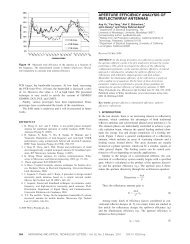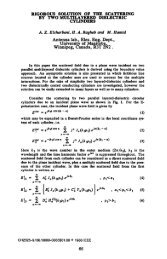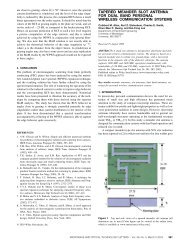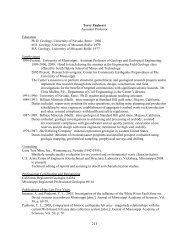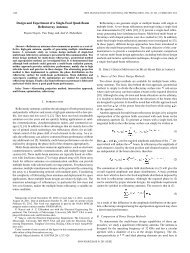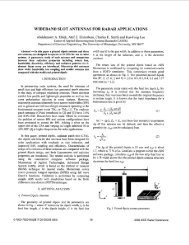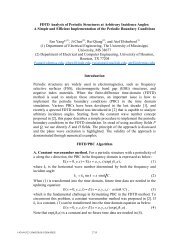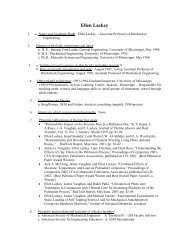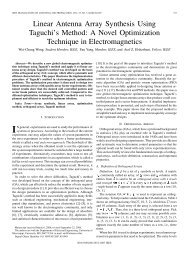OBLIQUE INCIDENCE PLANE WAVE SCATTERING FROM AN ...
OBLIQUE INCIDENCE PLANE WAVE SCATTERING FROM AN ...
OBLIQUE INCIDENCE PLANE WAVE SCATTERING FROM AN ...
Create successful ePaper yourself
Turn your PDF publications into a flip-book with our unique Google optimized e-Paper software.
266 Henin, Elsherbeni, and Al Sharkawyy gx gy iyρ'gφg'φ'ixρ'id igφigx iFigure 2. The cross-sectional geometry of the cylinders in the x-yplane.E d φ i(ρ i ,φ i ,z) = −E ′ 0G hρ i λ 2 d−E ′ 0G k dη djλ d∞∑nB in J n (λ d ρ i ) e jn(φ i−φ 0 )−∞∑∞−∞D in J n (λ d ρ i ) e jn(φ i−φ 0 ) , (12)The expressions in equations (2)–(5), (8)–(9), and (11)–(12)indicate that both the electric and magnetic field components arebased on the local coordinates (ρ i ,φ i ,z) of cylinder “i”. However, theinteraction between the M cylinders in terms of multiple scatteredfields will require a representation of the scattered field from onecylinder in terms of the local coordinates of another as shown inFig. 2. Therefore, the addition theorem of Bessel and Hankel functionsare used to transfer the scattered field components from one set ofcoordinates to another. As an example the scattered fields from thegth cylinder in terms of the ith cylinder are presented by [11, 12]H (2) (λ 0 ρ g ) e jmφg= ∑ mJ m (λ 0 ρ i ) H (2)m−n (λ 0d ig ) e jmφ ie −j(m−n)φ ig(13)d ig = ρ ′ 2i + ρ ′ 2g − 2ρ ′ iρ ′ g cos ( φ ′ i − φ ′ g),



